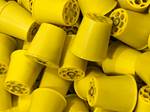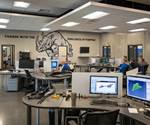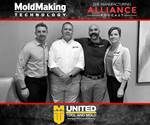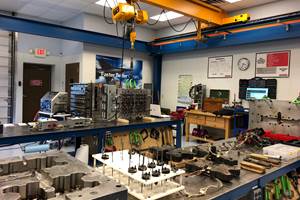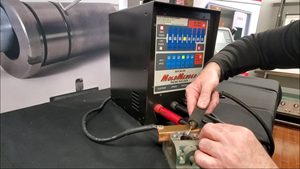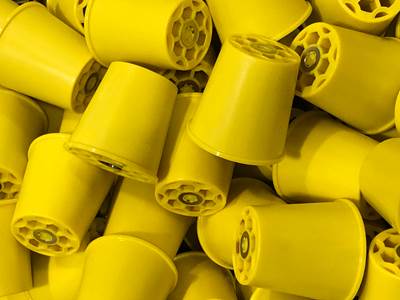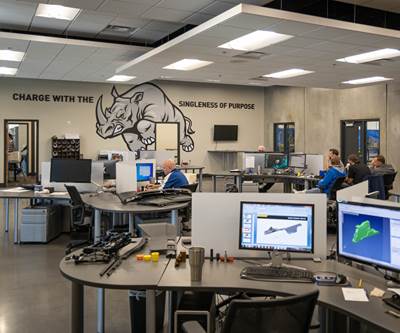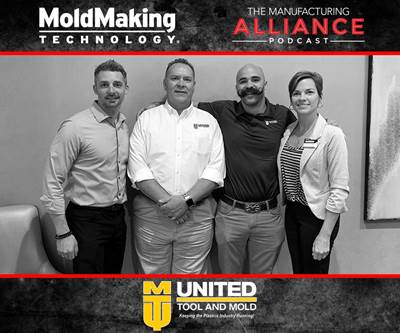VIDEO: The Importance of Facility and Flow to Mold Repair and Engineering Changes
United Tool and Mold Owner Scott Phipps speaks with MoldMaking Technology Editorial Director Christina Fuges about its new 60,000-square-foot facility dedicated to large mold repair and engineering changes, which has improved the company's competitiveness and their future plans for growth and improvement.
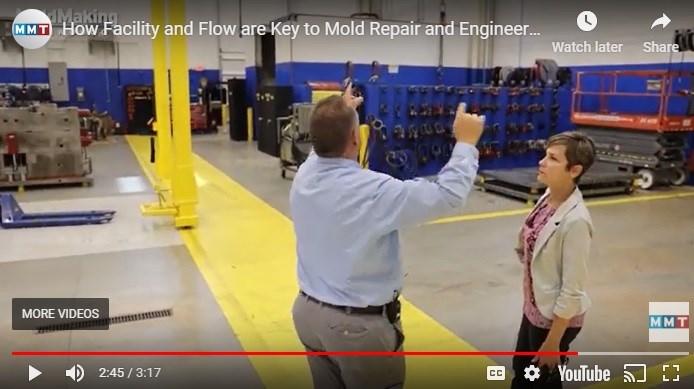
United Tool and Mold Owner Scott Phipps speaks with MoldMaking Technology Editorial Director Christina Fuges about its new 60,000-square-foot facility dedicated to large mold repair and engineering changes, which has improved the company's competitiveness and their future plans for growth and improvement.
Here is a video and transcript of the interview:
At United Tool The more we keep the plastic industry up and running. No matter how big they get or what size they need, we're going to meet their demands. United Tool and Mold has no boundaries. We've taken on a rhino mentality, not a cow mentality grazing in a field behind a fence. We go beyond and charge forward at all time. The culture has developed and they can do anything. And we'll take on anything with a damn the torpedoes attitude.
United Tool & Mold started in 1995, focusing on repair and engineering changes to service the plastic injection mold market. The focus on repair and engineering change comes from the demand of the customers because they were building them up north and in the south and there weren't any large tool shops. The focus for us was to get to where we could handle originally with twenty five tons, but today we handle 50 to 60 tons.
Back in the early days, we were servicing the container industry, skids, Paxton, returnable packaging and plastic containers. We started servicing globally in the late 90s and early 2000s with the service of the global market the demand was even higher. That pushed us on up into getting to the very large tools to land them and get them pushed in and get them through to get our customers up and running.
The new facility gave us the advantage of wiping the slate clean and bringing everything we did in all the other three facilities underneath one roof with all the best ideas. From laser welding, laser engraving, laser scanning our app systems that follows the tool from the beginning from pickup to the end, to our ERP system, communication to the central hub where our purchasing is in the center of our facility and all of our engineering is driven from the center out.
So with the focus on the new building being a drive through because we do 50 to 60 job a week, the crane capacity and the ability to load and unload molds on and off the trucks helps divide and create a barrier between us and our competition. With the ability to add on forty more thousand feet to the building, we see that one day we might need to go to a 100 ton cranes. Cars are only going to get bigger. The parts are only going to get bigger. Everything is going to keep growing.
They've got to make cars lighter and lighter. Frames are going to become more and more plastic or composite and body parts are going to be more and more one piece to get strength in them, causing the molds to be larger and larger. So with larger molds requires people to service larger, tools. And we have service guys on the road that service these so we don't have to move them, but when we have to move them, we've got to be able to handle them with the equipment we got.
For more on UTM, listen to the MMT/The Manufacturing Alliance Podcast.
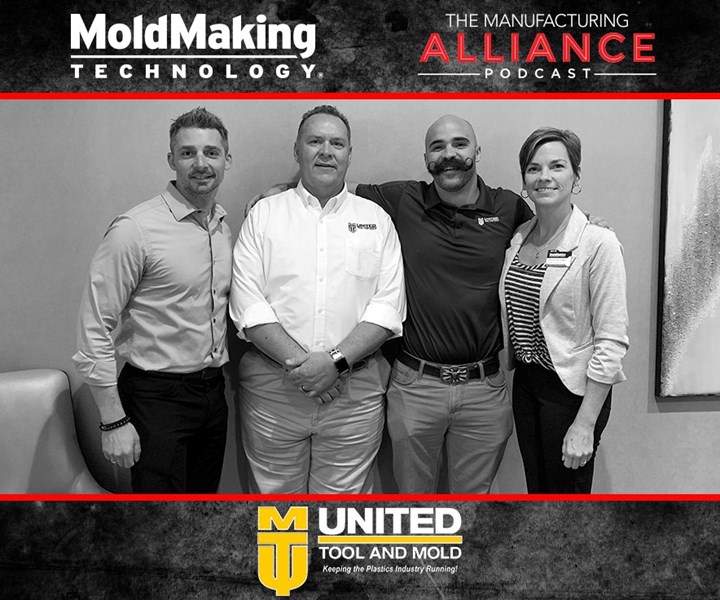
Related Content
How to Use Scientific Maintenance for More Accurate Mold and Part Troubleshooting
Discover how adopting scientific maintenance approaches helps improve mold lifespan, minimize failures, and optimize production outcomes.
Read MoreWhat is Scientific Maintenance? Part 2
Part two of this three-part series explains specific data that toolrooms must collect, analyze and use to truly advance to a scientific maintenance culture where you can measure real data and drive decisions.
Read MoreWhat You Need to Know About Hot Runner Systems and How to Optimize Their Performance
How to make the most out of the hot runner design, function and performance.
Read MorePortable Low-Heat, Non-Arcing Resistance Welder for Mold Repair
Rocklin’s user-friendly MoldMender Micro Welder delivers simple and cost-effective localized repair in-house with precision and versatility, enhancing mold and die durability and reducing disassembly and downtime.
Read MoreRead Next
When It Comes to Shop Safety, Think Beyond Pallets and Blocks
More often than not when touring a shop I see a unique approach to solving an everyday problem. This time it was a shop full of big, heavy molds that were not sitting on pallets or blocks across the the floor. Instead, they were sitting on top of small, plastic feet.
Read MoreHow to Improve the Flow of Mold Repair and Engineering Changes
A new perspective on competition, training and workflow redefines this shop’s core competency in repair and engineering changes, and charges the team toward continuous improvement.
Read MorePODCAST: What Do Rhinos Have to Do with Repair?
United Tool and Mold Owner Scott Phipps recalls “always building something" as a kid, and that continues today as he and his team charge forward with expanding and improving their mold repair and engineering change services business. Who are they and how are they growing this critical segment of mold manufacturing? Listen in to learn.
Read More

